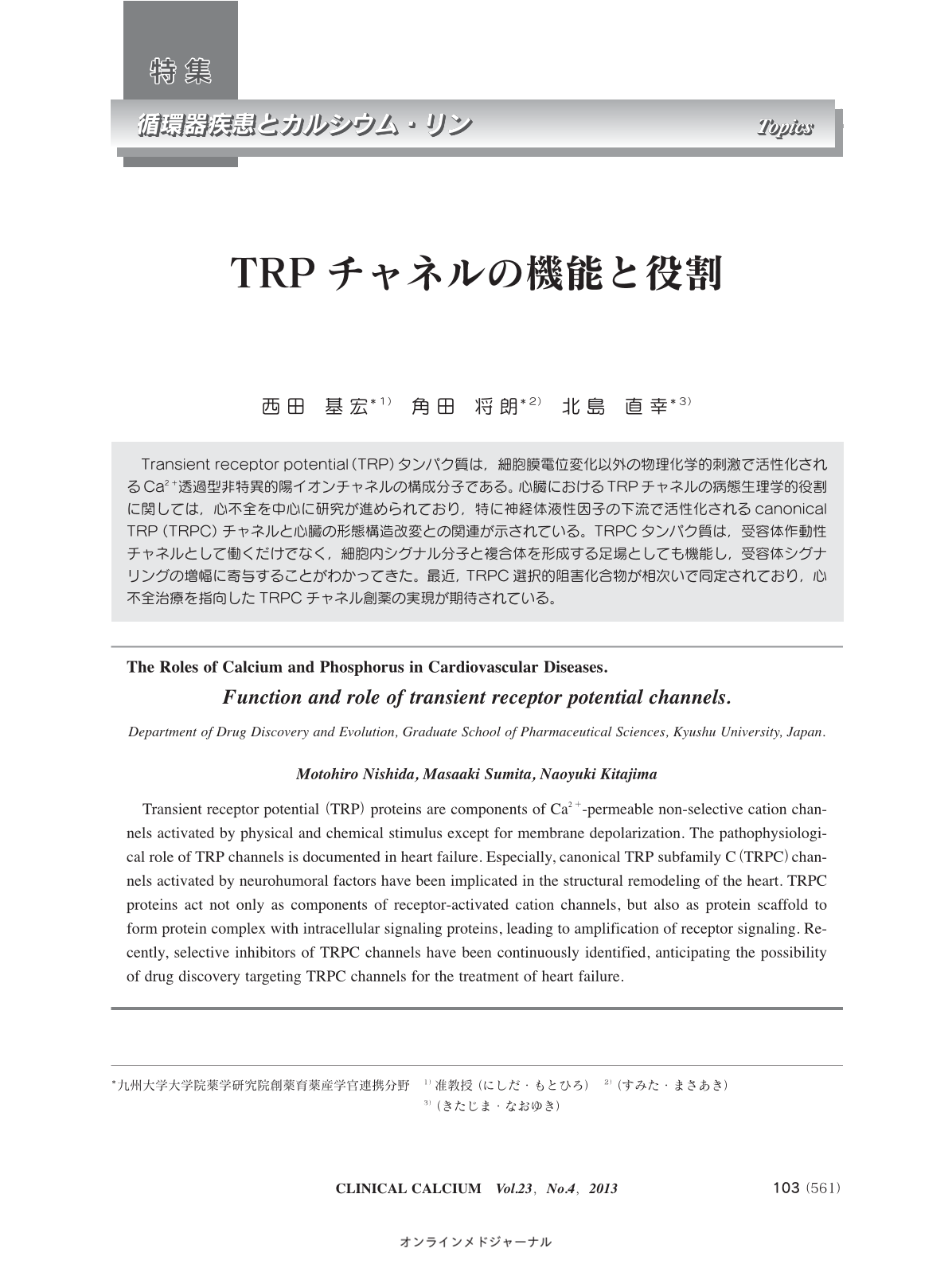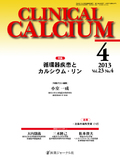Japanese
English
- 有料閲覧
- Abstract 文献概要
- 1ページ目 Look Inside
- 参考文献 Reference
Transient receptor potential(TRP)タンパク質は,細胞膜電位変化以外の物理化学的刺激で活性化されるCa2+透過型非特異的陽イオンチャネルの構成分子である。心臓におけるTRPチャネルの病態生理学的役割に関しては,心不全を中心に研究が進められており,特に神経体液性因子の下流で活性化されるcanonical TRP(TRPC)チャネルと心臓の形態構造改変との関連が示されている。TRPCタンパク質は,受容体作動性チャネルとして働くだけでなく,細胞内シグナル分子と複合体を形成する足場としても機能し,受容体シグナリングの増幅に寄与することがわかってきた。最近,TRPC選択的阻害化合物が相次いで同定されており,心不全治療を指向したTRPCチャネル創薬の実現が期待されている。
Transient receptor potential(TRP)proteins are components of Ca2+-permeable non-selective cation channels activated by physical and chemical stimulus except for membrane depolarization. The pathophysiological role of TRP channels is documented in heart failure. Especially, canonical TRP subfamily C(TRPC)channels activated by neurohumoral factors have been implicated in the structural remodeling of the heart. TRPC proteins act not only as components of receptor-activated cation channels, but also as protein scaffold to form protein complex with intracellular signaling proteins, leading to amplification of receptor signaling. Recently, selective inhibitors of TRPC channels have been continuously identified, anticipating the possibility of drug discovery targeting TRPC channels for the treatment of heart failure.



